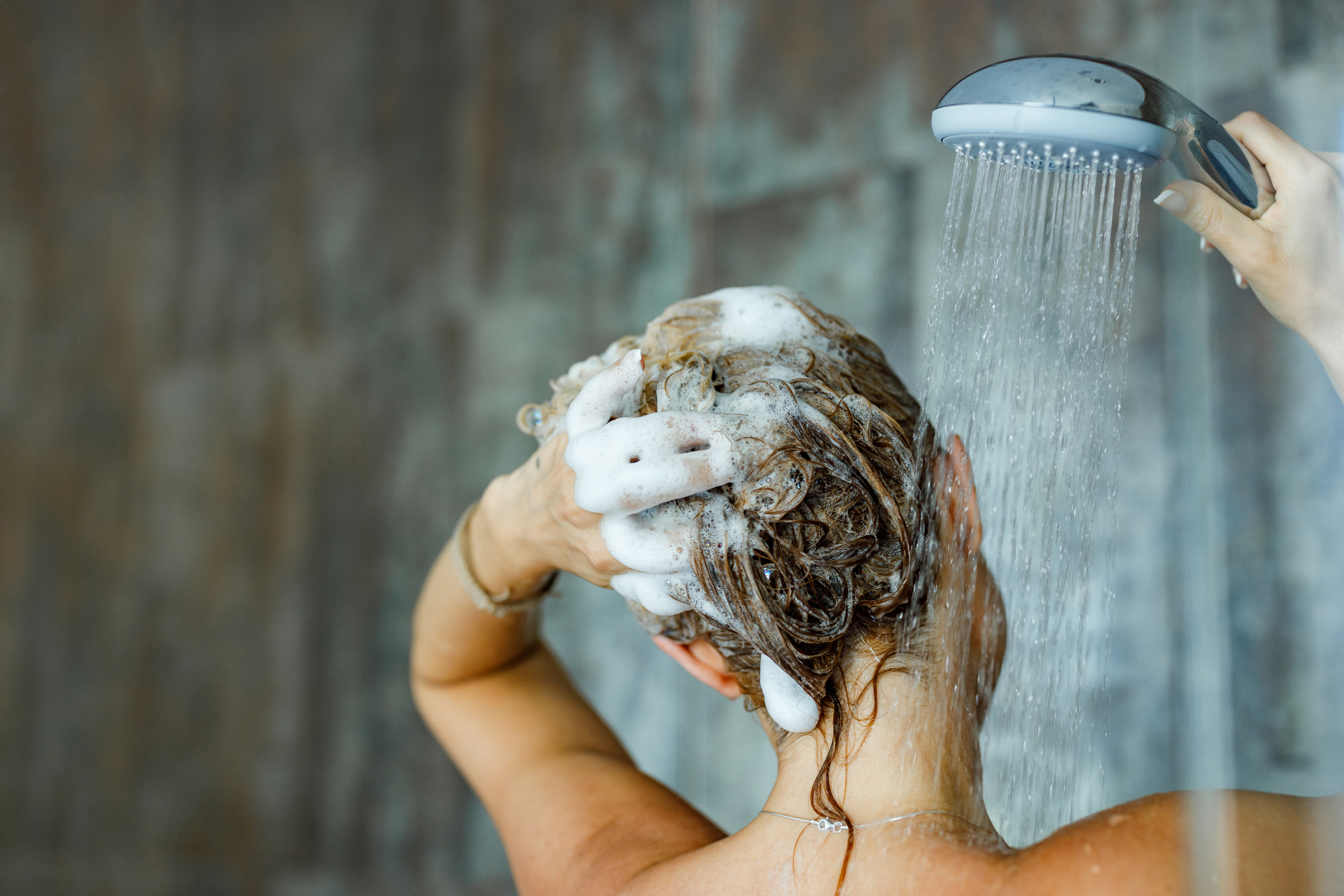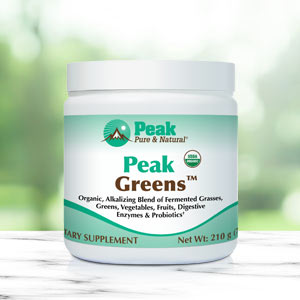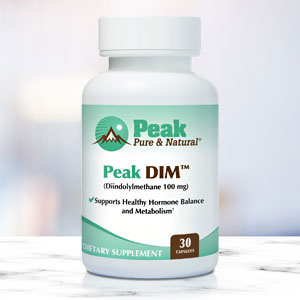Get Easy Health Digest™ in your inbox and don’t miss a thing when you subscribe today. Plus, get the free bonus report, Mother Nature’s Tips, Tricks and Remedies for Cholesterol, Blood Pressure & Blood Sugar as my way of saying welcome to the community!
Wash these toxins out of your hair

Are you lathering yourself with poisons, even in so-called healthy body care products?
Since they wash right off, many people don’t feel they need to worry about toxins in soaps, shampoos and conditioners.
Worse, many more people don’t even realize they’re washing toxins right into their system through the largest route of exposure: the skin. The truth is transdermal absorption (absorption through the skin into the bloodstream) of chemicals is a very real and serious issue.
If you currently use body products with any of the ingredients listed below, you could be exposing yourself to dangerous levels of health-robbing toxins that disrupt hormones, generate inflammation and oxidation, compromise immunity, and fuel a number of chronic illnesses down the road.
Parabens
Parabens are a common cosmetics preservative added to eliminate bacteria and fungi. Reducing bacteria levels means the products can stay on the shelf longer. However, parabens are dangerous to more than bacteria, having been linked to increased estrogen levels, which can lead to hormonal disorders and even cancer.
Methylparaben and ethylparaben have been linked to allergies, endocrine disruptions and immunotoxicity. Studies have found that methylparaben applied to the skin can react with UVB radiation, leading to premature skin aging and DNA damage.
Parabens have been found in breast tumors and have also been shown to mimic estrogen.
Parabens have also been linked to skin irritation, contact dermatitis and rosacea in people with paraben allergies.
Quaternium-15
Another ingredient, quaternium-15, is known to release formaldehyde, which is a skin, eye and respiratory irritant. The compound has also been linked to cancer, specifically leukemia. Quaternium-15 is also an allergen and can cause contact dermatitis.
Fragrances
Most deodorants, shampoos, sunscreens, body care and baby products contain some type of artificial fragrance. Fragrances are complex and can be made up of as many as 4,000 ingredients. Many of the compounds in fragrances are allergenic, while some are toxic and even carcinogenic.
People have reported to the U.S. Food and Drug Administration a variety of reactions to fragrances, including headaches, dizziness, rashes, coughing, nausea and skin irritation. Fragrance exposure can impair the central nervous system, causing depression, hyperactivity, irritability and other behavioral issues.
Methylisothiazoline
In research conducted by the National Institutes of Health, methylisothiazoline (MIT) has been linked neurological damage. The compound can increase the risk of brain defects in unborn children, as well as lead to Alzheimer’s and other neurological disorders. This ingredient is commonly found in Head & Shoulders, Suave, Pantene, Clairol and other well-known shampoos.
Sodium Lauryl Sulfate
Sodium lauryl sulfate (SLS) and sodium laureth sulfate (SLES) make soaps foamy and are found in nearly every brand of shampoo and body wash. Interestingly, they are also used in car washes. These chemicals have been linked to skin and eye irritation, endocrine disruption, possible genetic mutations and cancer.
Glycerol Propylene Glycol
Also used in shampoos, glycerol propylene glycol is closely related to car antifreeze. Propylene glycol can cause dermatitis, dry skin, rashes, kidney and liver issues, and cell membrane damage.
Various oils and synthetic silicone polymers are also added to shampoos, along with thickeners, such as xanthan gum, and emulsifiers, such as glycol stearate.
Colorants
Made from coal tar, colorants are known to cause allergic reactions and cause cancer in animals. Thickeners are also used to change a shampoo’s consistency and appearance. For example, some shampoos generate a “pearly” sheen by adding flakes of wax.
1,4-Dioxane
Very few personal care products list 1,4-dioxane as an ingredient, even though it has been found in 22 percent of the products in the Skin Deep database from the Environmental Working Group. Ironically, 1,4-dioxane is not listed because it is a contaminant, not an intentional ingredient. The chemical is a byproduct of the ethoxylation process. Ethoxylation is a relatively common chemical process that renders harsh cleaning ingredients gentler. However, regardless of intent, it has been linked to numerous health issues. Issues with dioxane:
- The U.S. Environmental Protection Agency classifies dioxane as a probable human carcinogen.
- Under Proposition 65, dioxane is classified in the California as a carcinogen.
- In the journal Cancer’s 2007 review of mammary carcinogens, dioxane was one of 216 chemicals linked to breast cancer.
- The chemical 1,4-dioxane is used to produce varnishes, paints, inks and detergents. It can even get into food via packaging materials or pesticide residue.
Nitrosamines
Cocamide DEA, a foaming agent often added to shampoos, reacts with nitrosating agents to form nitrosodiethanolamine (NDEA), a potent carcinogen, which can penetrate skin. As a result, some manufacturers test their finished products for nitrosamines. Studies have identified nitrosamines in more than half of all body care products.
Phenylenediamine
Phenylenediamine (PPD) is present in more than two-thirds of chemical hair dyes and is known to be toxic to the immune system, skin, nervous system, respiratory system, liver and kidneys.
Rinse And Don’t Repeat
The best way to protect yourself is to seek out shampoos and cosmetic products that are low on ingredients with potential harm or, better yet, find products that are completely toxin-free. This may be difficult when shopping at regular supermarkets or salons; however, a search online or visit to your local health food store can help you locate products free of dangerous chemicals. One practical strategy that is not used enough is to add beneficial ingredients to shampoos, such as herbal extracts high in antioxidants that can protect against oxidative and inflammatory damage.
In addition, consuming high amounts of protective ingredients in the form of foods and supplements can help prevent damage and detoxify the body of harmful chemicals.
Some top ingredients include:
- ECGC from green tea extract
- Zinc
- Selenium
- Honokiol extract
- Tocopherols
- Vitamin C
- Alpha Lipoic Acid
- Modified citrus pectin and modified alginates
- A comprehensive detoxification and antioxidant formula containing dandelion, milk thistle, cilantro, MSM, NAC and other targeted ingredients.
It’s a good idea to engage in regular seasonal detoxification practices, and spring is one of the best times of year to support the organs of elimination (liver, gallbladder, kidneys, digestion, skin, lungs) in their job of removing toxins and metabolic waste products. A healthy detox diet, targeted supplements such as those listed above and regular exercise can go a long way toward eliminating pollutants from the body and optimizing your long-term health.
For more health and wellness information, visit www.dreliaz.org.
Editor’s note: Regain your health and enjoy a full, vibrant life by defeating the real culprits of premature aging and sickness — excessive, damaging acid in your body! The truth is when you’re alkaline, wellness thrives and sickness takes a dive. Click here to discover The Alkaline Secret to Ultimate Vitality!















